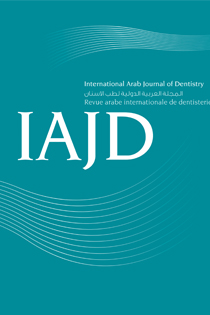Abstract
The growing awareness about dental aesthetics and functionality in the general population has led to more and more people seeking orthodontic treatment.
The patient’s ability to achieve and maintain good overall oral hygiene and prevent periodontal disease is fundamental while undergoing orthodontic treatment. This study was done to evaluate the periodontal health status of Saudi patients scheduled for fixed orthodontic treatment.
Fifty patients (12-26 years old) were selected from orthodontic clinics of King Abdul-Aziz Medical City of National Guard, Riyadh, Saudi Arabia. The periodontal health status of the patients was evaluated using the plaque index (PI), the orthodontic plaque index (OPI) and the gingival bleeding index (GBI). These indices were determined prior to the placement of fixed appliances, after 6 months and after 12 months of the beginning of the orthodontic treatment.
Results showed that PI and OPI were high with mean scores of 65.24 ± 16.43 for PI and 53.56 ± 8.74 for OPI, while the average GBI scored a much lower value of 19.14 ± 7.95. After 6 months of treatment, the probing pocket depth at the first molars was 1.5-2.0 mm. In some severe cases it exceeded 3mm. After 12 months of treatment, the probing pocket depth was greater than that observed at 6 months and it mostly fell in
the range of 2.0-2.5mm.
No significant differences were observed between male and female patients for the PI (p=0.925) and for OPI (p=0.072); However, a significant difference was observed for the GBI (p=0.033). Thus it was concluded that plaque deposition during orthodontic treatment can promote periodontal inflammation and destruction. Oral hygiene measures, patient education and motivation can help maintain oral hygiene and minimize the hazardous effects of orthodontic treatment on periodontal tissues.

